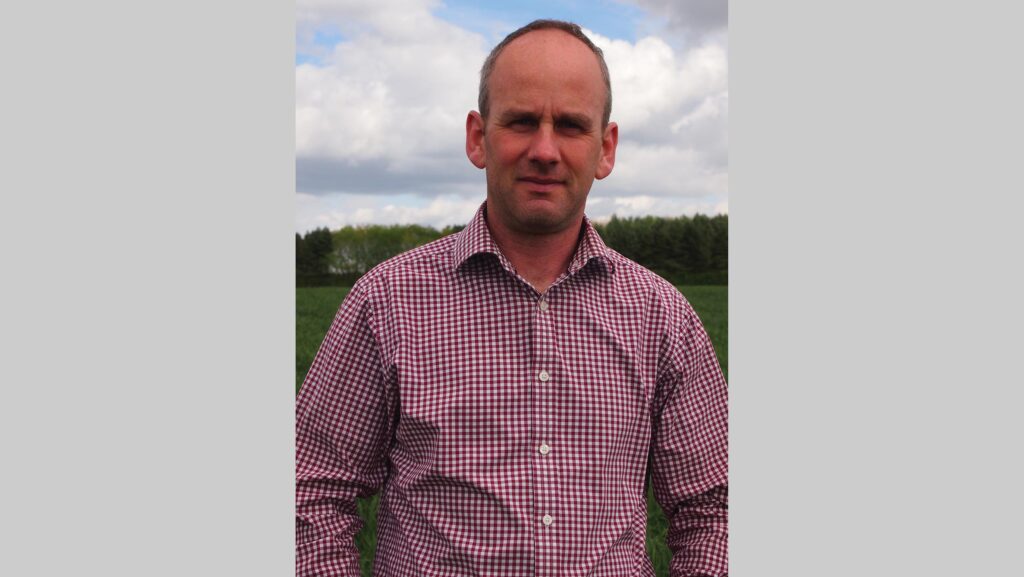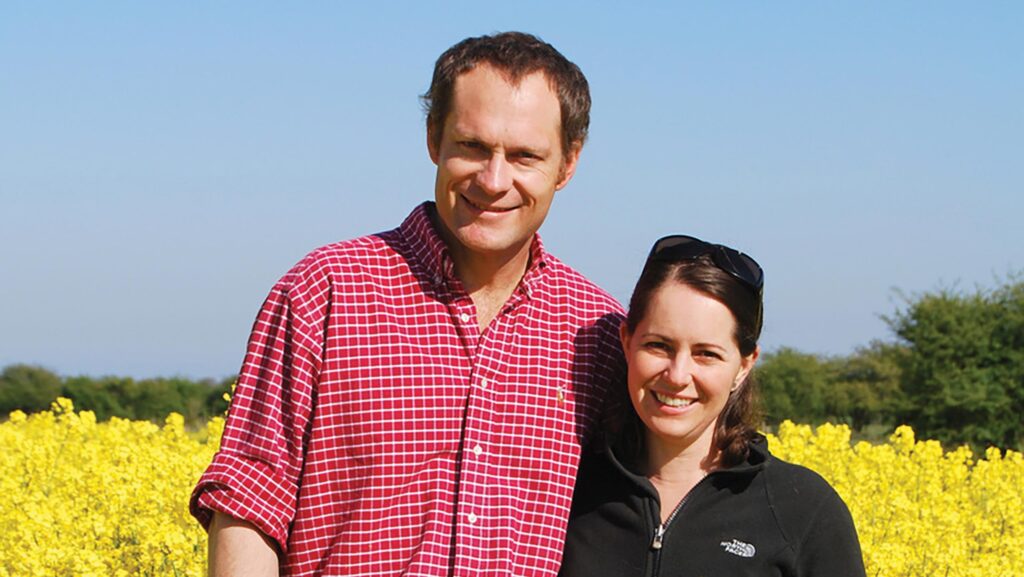Why regenerative farming needs to start with the soil
 © Tim Scrivener
© Tim Scrivener Farmers adopting a regenerative farming system should focus on improving the functionality of the soil and accept that it will take time to see results, says a leading consultant.
By starting with soil health, everything that is introduced as part of the new approach – such as zero-tillage, cover crops and a more diverse rotation – contributes to this goal and helps to make the farm more resilient.
Regenerative agriculture also provides the basis of the wider social and environmental benefits that are increasingly being expected from food production.
See also: New hosts for new-look Cereals event
Systems approach
“It’s a system, not just a change in cultivations, that builds carbon in the soil,” says James Warne of Soil First Farming. “And as such, it takes time and attention to detail to get it right.”
So far, the regenerative farming movement has been driven by ideology or personal preference, but there is now the “carrot” of financial incentives through the Sustainable Farming Incentive (SFI) and other schemes, he notes.
“It was seen as the right thing to do, and the farmers involved wanted to take their businesses in a certain direction. The fact that you can now get paid for doing it is prompting others to take a closer look.”

James Warne © James Warne
Starting point
For those just starting their journey, don’t be tempted to change the whole farm in one go, James advises.
“To de-risk, choose a point in the rotation to introduce the new system. That gives you a timescale to work to. If you have a five-year rotation, for example, you know that it will take you five years to change.”
He suggests that wheat following oilseed rape is a good entry point. If the oilseed rape crop yielded well and it is dry at harvest, the soil will be in as good condition as possible.
“Let the crop tell you if the soil is suitable,” he says. If it is, James recommends sticking a catch crop in straight after the combine, allowing you to drill directly into it.
Catch crops
James’s rule of thumb for a catch crop is that there must be more than three weeks between harvest and the next cash crop.
“You want something that is cheap, fast-growing and will cover the ground quickly, such as mustard. Having roots in the soil means you can capture carbon, keep the soil alive and create a tilth to drill into.”
Catch crops bring many benefits, but one of the issues to be aware of is that they can act as a mulch in wet conditions. That can work against you as the soil takes longer to dry out.
James adds that it’s very common for soils to become tighter in the first few years. “That’s understandable, as you are no longer putting air into them with cultivation. You have to be considerate about when and where you do things to avoid compaction.”
Despite what many believe, a yield dip isn’t always seen and shouldn’t be expected, he adds. “A fall in output doesn’t have to be the case and only tends to occur if there’s been confusion between a regenerative and a low-input system.”
Common myths
Input reductions
Don’t expect to benefit from input reductions in the first few years and don’t be surprised if your nitrogen use goes up in that time, James says.
“You are building carbon back into the soil through practices such as cover cropping and crop residues, getting to a C:N ratio of 10:1, so the system may need to find some more nitrogen from somewhere,” he explains.
Insecticides are usually the first input that can be dropped.
“That comes from having a healthier crop and greater diversity. Otherwise, savings come in the form of diesel and time, as cultivations have ceased, rather than inputs.”
New drill
There is no need for a hefty upfront investment in a new drill for the first few years, James says. “Most farms already have a drill that can be converted quite cheaply and used at the beginning.”
Some of the best results he has seen are where a cultivator drill has been turned into a zero-till drill for minimal expense. “They work well in the right conditions and give a good start,” he says.
Heavy soils
Contrary to popular opinion, a regenerative system often works better in heavy soils, even in wet seasons, says James.
“Heavy soils have some natural structure and porosity, so you see them start to drain better. Where you’ve chopped straw, introduced carbon, stopped trafficking wet soils and boosted earthworm numbers, they can handle moisture and manage water.”
Case Study: Gary Willoughby, east Lincolnshire

Gary and Debbie Willoughby © AHDB
Lincolnshire growers Gary and Debbie Willoughby introduced regenerative agriculture four years ago and are already seeing changes in the soil and an uplift in biodiversity.
They have also been able to make the Sustainable Farming Incentive (SFI) work well with their new farming system, using it to complement cropping rather than replace it, as well as validating their decision.
Despite some “ups and downs”, or learning experiences as Gary prefers to call them, he believes they are through the pain barrier and is looking forward to further benefits when the new SFI actions are unveiled in June.
“The SFI is already working alongside our crops, with measures such as companion cropping, overwinter cover crops and no insecticides,” he says.
“Our second agreement will be able to include payments for direct drilling, variable-rate applications and summer cover crops, for example, so it’s good that we’re a year or two ahead and don’t need to make radical changes now.”
Just inland from Skegness and farming marshy soils that rely on under-drainage, the Willoughbys started out with a shared Weaving GD drill.
Gary realised it didn’t suit all farm situations, and went on to build a 3m tine drill.
From there, he developed and built his own 8m tine drill, complete with three seed hoppers and a liquid applicator.
He will be sharing his knowledge and speaking about how he did that on both days of the Cereals event.
“It’s true that you don’t need to spend a huge amount on a new drill,” he says. “The seed that goes in the ground doesn’t know any better.”
The very wet autumn and winter means the farm looks quite different this year, Gary says, as late-drilled oilseed rape and wheat crops established in the autumn failed.
He now has 40% of the land in spring wheat with a bean companion, being grown on contract for Wildfarmed.
“We were already direct drilling, so the Wildfarmed system suits the direction that we’ve taken the farm in,” he says. “It will be interesting to see how it performs.”
James Warne and Gary Willoughby will be speaking at the new Direct Driller@Cereals conference area at this year’s event.
With the theme of “regenerating farm profit”, the programme will tackle how regenerative farming can help arable farms become more commercially successful.
Topics include SFI, machinery, cover crops and nutritional benefits, with speakers and expertise provided by Base-UK.

